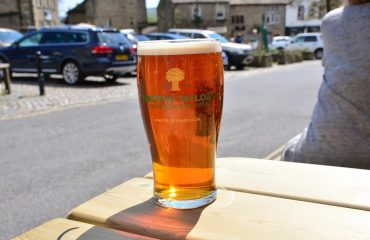High in The Yorkshire Dales, between Hawes and Leyburn are the magnificent Aysgarth Waterfalls. Cascading majestically over three flights of fast, gushing water down the River Ure and flanked by lush green woodland, this natural wonder is high on the list of must-see places in Yorkshire.
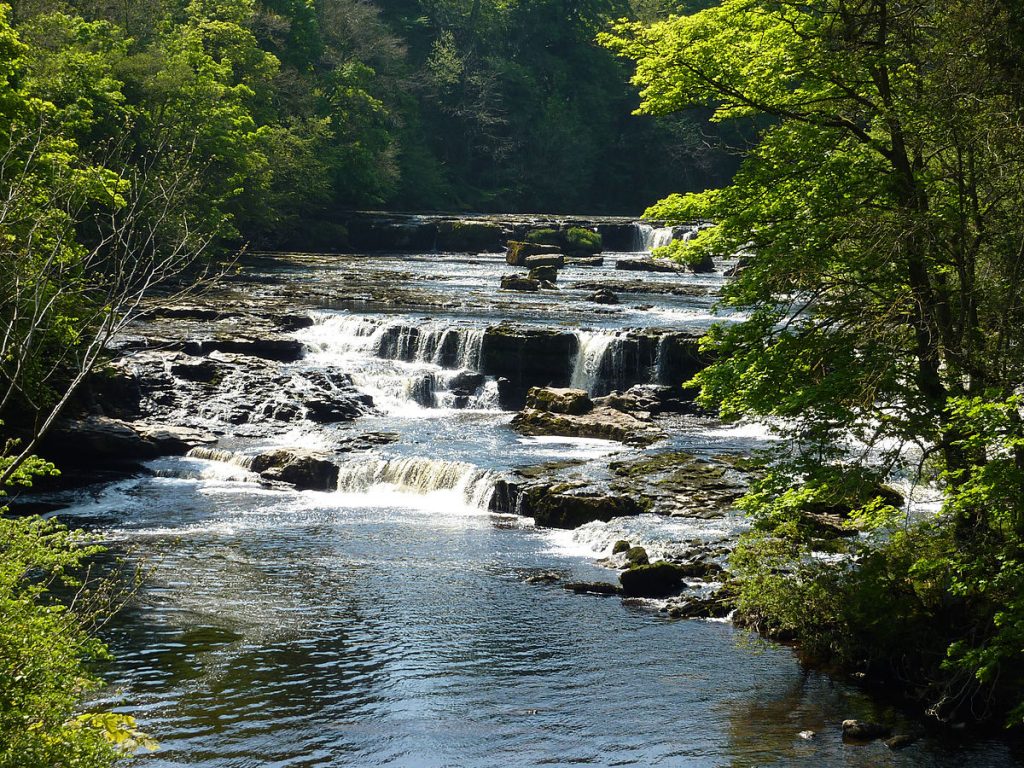
How Aysgarth Falls were formed
The rocks which Aysgarth Falls flow over were formed 300 million years ago and consist of layers of hard limestone and softer shale, known in geology as the ‘Yoredale Series.’ These ‘rocky sandwich’ formations are common in the Yorkshire Dales. At the end of the last Ice age, 11,700 years ago the thick ice sheets which once covered them melted, causing a great surge of melt water to flow over this rock mixture of shale and limestone. While the water easily eroded the shale creating a river bed, the water could not erode the limestone very easily as it is more water resistant. This created the steps in the course of the river Ure and as the water flows over them the force of gravity sends it cascading down the limestone steps to the lowest point, creating these magnificent waterfalls. Aysgarth Falls is split into three parts, the Upper Force, Middle Force and Lower Force, which and are spread out over the course of roughly one mile.
Aysgarth Falls As A Tourist Attraction
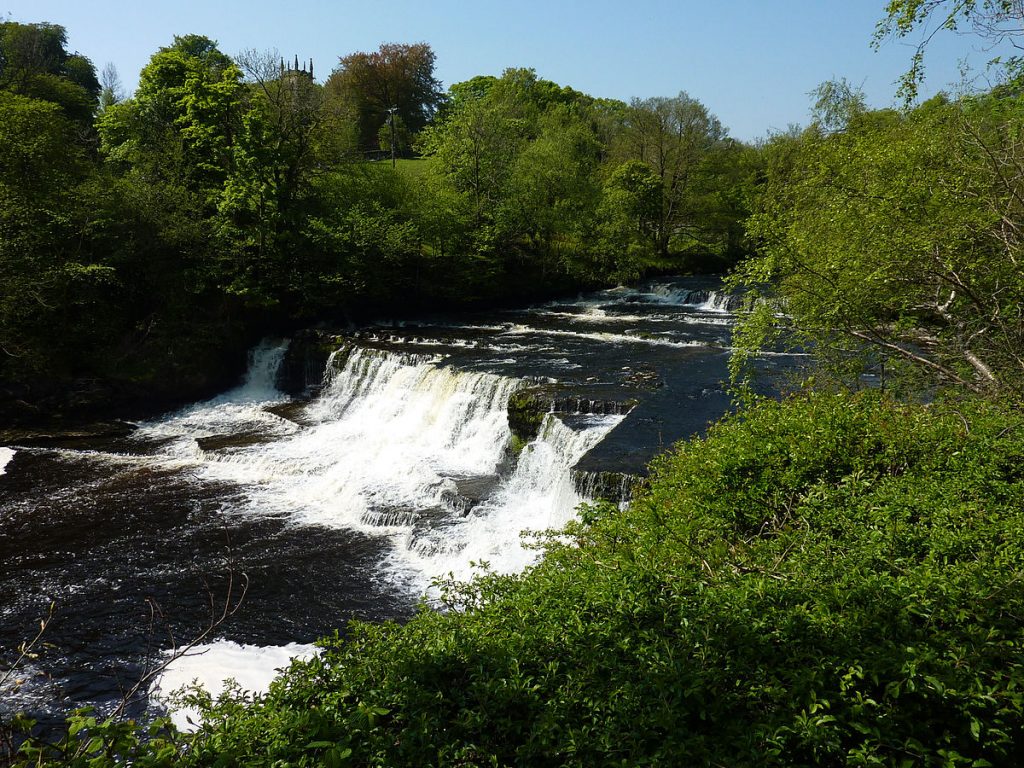
Aysgarth Falls have been a tourist attraction for over 200 years as people have flocked to see this natural wonder throughout the generations. The attraction has been visited by famous artists, such as JMW Turner, Ruskin and William Wordsworth, all of which were inspired by the drama of the waterfalls. More recently it was used in the film, Robin Hood Prince of Thieves.
These days it is run by the National Trust and there is a car park, Visitor Centre and Café within an easy walk of the falls.
All three of the waterfalls are easily accessible by a well maintained footpath, with viewing platforms at each. The higher has picnic tables and lots of space to enjoy. The Middle Falls are accessible by a footpath and you can view them at a longer distance. The lower falls can be seen close up, but don’t go too near the edge! The true drama of the cascading water can really be appreciated here.

Nature at Aysgarth Falls & Freeholders Wood
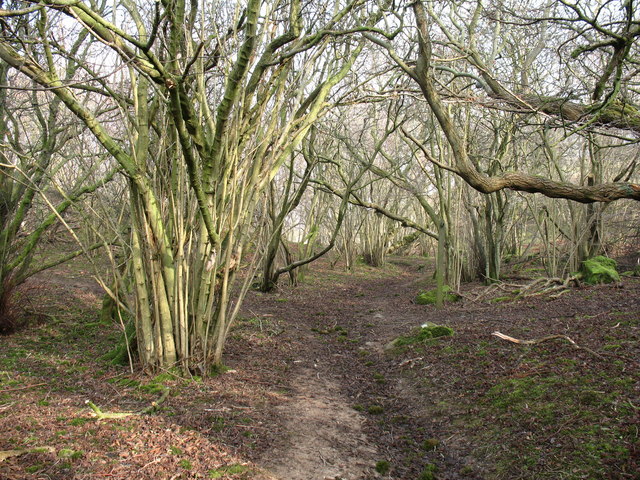
Aysgarth falls is a site of Special Scientific Interest. The waterfalls and surrounding woodlands are home to an abundance of wildlife in all different forms. The falls and river Ure are home to the rare white clawed crayfish, brown trout and occasionally if you are lucky enough to see them, salmon leaping over the cascades. Dipper, pied and grey wagtails amongst other upland water birds can also be seen here. The adjacent Freeholder’s Wood Nature Reserve is home to over 120 species of wild flowers, including carpets of bluebells, orchids and woodland daisies. The woodland is also home to a variety of mammals, including the increasingly rare red squirrel and wood mice. Since 2008, the nocturnal dormouse has been re-introduced to the area after becoming extinct in Yorkshire and their numbers are growing. Freeholders Wood is full of birdsong from species, such as Chaffinch, Blackcap, Chiffchaff, Goldcrest and Bullfinches which inhabit the reserve. There are numerous popular circular walks which take in the three waterfalls, Freeholders Wood and the nearby Castle Bolton
Aysgarth Village & Attractions
While visiting the falls, there is also plenty to see in the nearby village of Aysgarth.
The nearby village of Aysgarth dates back the Anglo-Saxon Period and it is mentioned in the Domesday Book as Echeschard, which in Old Norse means ‘Oak tree cleft,’ referring to the valley created by the River Ure and woods. The tranquil village offers a range of facilities for tourists visiting the area and the nearby Falls, including gift shops, cafés pubs and a hotel.
The Edwardian Rock Garden

One feature of the village is the Edwardian Rock Garden, which is donation only to enter. These were built in the first decade of the 20th Century for Frank Sayer Graham by Backhouse & Sons from York, who specialised in this new type of rock gardening which was growing in popularity at the time. When Frank died in 1946, the gardens passed through several owners but gradually fell into disrepair, becoming overgrown and derelict. In 1988 it was almost sold to developers. However, in 1998, the rock garden was bought by the Jauneika family, who restored the garden to its former glory and opened it to the public in 2003.
It is a rare surviving type of rock garden, with a ‘walk through grotto’ style design.
There is a maze of winding paths, with rare and beautiful plants blooming amongst large limestone rocks. There is also a babbling mountain stream and waterfall which flows at the back of the garden. Generally it is a great place to wander round and enjoy the beautiful plants amongst the rocks.
St Andrew’s Church
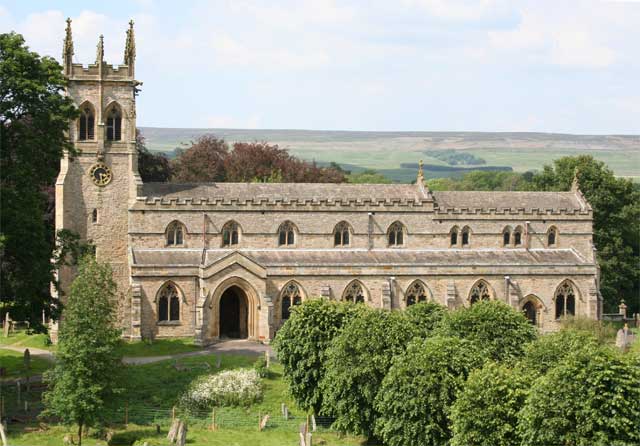
St Andrew’s church at Aysgarth dates back to Medieval Times, which was rebuilt in 1536 and further restored in 1866. It once contained a Saxon stone cross, dating from the 10th Century, but this was unfortunately stolen in 1996. The churchyard is one of the largest in the country and has over 1000 graves! Some of the features within the church were salvaged from the destruction of Jervaulx Abbey during the dissolution of the Monasteries, such as the ornate Rood Screen, which is a partition between the chancel and the nave. Secondly the Abbot’s stall is thought to have originated at Jervaulx.
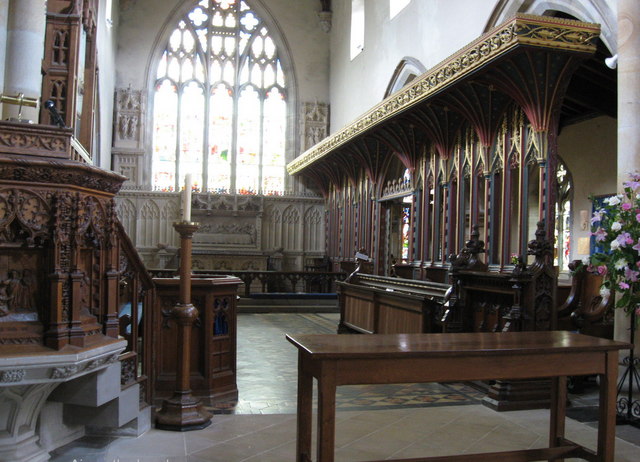
Please note: At the time of writing some or all of the attractions mentioned in this article may be closed due to the Covid-19 pandemic. Please check before visiting.

Written Sources
http://www.bbc.co.uk/england/sevenwonders/north/aysgarth/
https://www.natureinthedales.org.uk/get-involved/places-to-see-wildlife/aysgarth-falls
http://www.bbc.co.uk/england/sevenwonders/north/aysgarth/
https://en.wikipedia.org/wiki/Aysgarth_Falls
https://www.woodlandtrust.org.uk/visiting-woods/woods/freeholders-wood/
https://www.natureinthedales.org.uk/species/mammals/dormouse
https://www.britainexpress.com/attractions.htm?attraction=2720
http://www.aysgarthrockgarden.co.uk/history.htm
